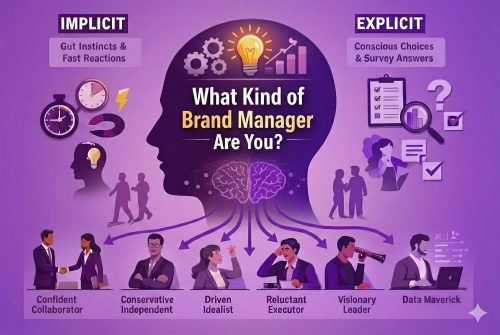Advertising, Ad testing, Market research
Written by Mark Webster.
Mark Webster is a seasoned brand, marketing and communications professional with over 25 years’ executive leadership experience across Asia Pacific. The former Chairman & CEO of J. Walter Thompson Hong Kong, I had experience leading their offices in Japan, Korea, Thailand, the Philippines, Vietnam and Malaysia. Now working in the UK with Split Second Research and Brand Musiq in Non-Executive Director roles.
When we’re preparing new advertising materials, we always hope for reassurance and validation from research, right?
Can we be confident that validation from ad testing research is accurate? What is the best market research method for advertising?
Ad testing is simply described as showing a selection of ad
concepts, or indeed the finished product, to a selected sample of your target audience and getting their feedback. That’s the reassurance we seek; the hard data we demand, the evidence we rely on and the springboard for our decision-making.

Advertising (on the whole) works.
Obviously, that’s why it exists and represents a multi-billion-dollar industry worldwide. Measuring and evaluating what works best, and why, is understandably a key part of the process for all of us associated with the industry.
Advertising effectiveness and improved performance are ultimately what we all aim for. It’s been many decades since Lord Leverhulme made the oft-quoted observation “Half the money I spend on advertising is wasted. The trouble is, I don’t know which half.” It has become something of a cliché for the effectiveness, or not, of advertising over the years. Whether it’s referring to that effectiveness, or the media mix or consumer targeting, it’s not exactly a good look in these days of accuracy and measurement, never mind what shareholders will think.

And therefore, we rightly need to measure and test a whole range of components, from brand image attributes to overall message, relevance to our target audience, credibility, cut-through and ultimately, to purchase intent.
All feedback gained can help improve the ad to give it optimal chances to succeed. It’s a battle-field out there and we need the smartest weapons, tactics and intelligence to win.
Refine, refine, refine.
It’s like a rough diamond that is polished until it sparkles.
There may well be unique insights from our core target group that help inform our next iteration of the ad. But are you sure? What’s your true level of trust and confidence? Be honest. Is it more a matter of hope?
During my career in the advertising agency world, mostly in the consumer-led Asian markets, I have been fortunate to work in partnership with some of the world’s leading research companies. And the ad testing we undertook, often with clients who represented the world’s most successful packaged goods companies, was of critical importance. Who, in this business, doesn’t want to know what their core customers think about their product or service, or indeed the advertising that is crafted to inspire and motivate them? Because ultimately, we do really care.
Rubbish?
Whether from a focus group, or online survey, or the legendary Link test with its traffic lights, many a time I’ve sat with a group of colleagues listening to the moderator, deciphering the feedback and analysing the nuances. I once recall a long – and somewhat frustrating – late-night debate over 4.5 seconds of a 30” TV commercial during a moment-by-moment analysis. It showed a woman throwing a rubbish bag into the waste disposal truck passing her door, and one respondent was concerned that she was being disrespectful in public.
End result, the client was spooked, and ultimately prepared to re-shoot the scene at significant extra cost and further delay. However, the local agency team managed to argue that the behaviour was indeed entirely natural, and persuade the client it was a normal everyday situation and should stand. The campaign ran as planned, very successfully, and not one member of the viewing public complained!

Cultural cues. International nuances. Social gaffes. They all matter. But did that possible rogue respondent really believe what they said or were they hypothesising? Were they just explicitly floating a thought? A contrary idea?
Truly, madly, deeply.
So, getting an accurate reflection of true feelings is obviously important. On so many levels. Which is why today an implicit test for me is so valuable. Maybe not madly, although some frustrating side-track, dead-end discussions can be labelled as that, but certainly deeply. And deeply is where I urge you to go.
Deep diving into human brains. Where we discover what our consumers think. Neuroscientific research. Implicit research. The types of tests that delve into the subconscious and reveal our true feelings. Not influenced by what others say. Not explicit theories, but responses with no cognitive bias. Perfect. I wish I had this type of research available when I was front and centre of so much consumer insight and ad testing.
Implicit over explicit
More and more people who work with, and have responsibility for, brands are recognising the value of implicit testing. It helps shape their thinking about planned advertising, package design, brand equity, new product development, product claims, pricing and promotion. It can even be used for creating personas for your core target audience.
I talked earlier about effectiveness and that ubiquitous industry quote about how much is wasted. Well, from their book “What sticks: Why most advertising fails and how to guarantee your success” the authors Rex Briggs and Greg Stuart conclude that waste comes from a poor understanding of consumer motivations, combined with inaccurate messaging and, of course, the wrong media mix.
Poor understanding…. Inaccurate messaging…. Really?
There is no excuse these days when we’re looking for validation from our tests. With the tools at our disposal, particularly implicit testing, we should be in a position to confidently believe in the results of the research we do on ads and not be living in hope. More accuracy. Less hope.
Latest Posts
Join Our Newsletter
Subscribe to our email newsletter to keep up to date with our latest insights, news, and findings on market research, implicit testing and our occasional psychological ‘neuro-nuggets’ of wisdom.
Written by Mark Webster.
Mark Webster is a seasoned brand, marketing and communications professional with over 25 years’ executive leadership experience across Asia Pacific. The former Chairman & CEO of J. Walter Thompson Hong Kong, I had experience leading their offices in Japan, Korea, Thailand, the Philippines, Vietnam and Malaysia.
Now working in the UK with Split Second Research and Brand Musiq in Non-Executive Director roles.
Our blog

Inside the Mind of a Brand Manager: Find out how your instincts shape the way you work
If you’re a brand manager, you may plan carefully, but a lot of how you work day to day probably comes down to habit and

When it comes to research, is everyone biased?
Well yes, as a matter of fact, everyone is There’s no shame in it. We’re all biased in some way or another, although understandably we’d

Market Research with Human and Synthetic Respondents
The idea of synthetic respondents in market research arises from a desire to simulate human responses using artificial intelligence. Instead of collecting data from real


